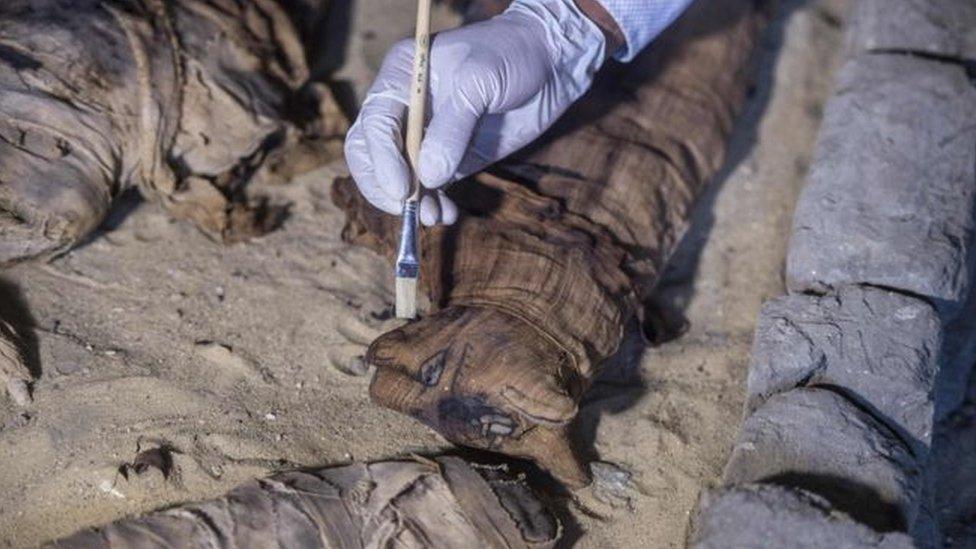Ancient Egyptian tombs and the strange things found inside them
- Published

Archaeologists in Egypt have discovered a collection of mummified cats that are thought to be 4000 years old. Cats had special significance in ancient Egyptian culture.
Mirror mirror on the wall, who鈥檚 the Pharaoh-est of them all? Some Ancient Egyptians put make-up kits in their tombs; used by both men and women, rich and poor. The most famous cosmetic was eyeliner which was a popular fashion at the time.
In 1922 Tutankhamun鈥檚 tomb was opened. Also known as King Tut for short, it was the first tomb to be found almost intact. It contained 5,398 artefacts including two thrones, six chariots, a solid gold burial mask, makeup bag, wig, perfume box and a coffin holding his mummy. King Tut must've been pretty hungry for a dead guy too, there were also over 100 baskets with barley, figs, grapes, melons, and more tasty treats. He also loved a glass of wine, as evidenced by the many jars of it in his tomb. There was a rumour that when the tomb was opened it released an ancient curse.
Think King Tut was extravagant? Well Pharaoh Khufu was buried with a boat. When his grave was uncovered near the Great Pyramid at Giza, archaeologists uncover more than 1,200 pieces of a giant boat nearby. Today, they've reassembled the ship, which is now on display in Egypt. It's 144 feet long.
We've all played that game of Monopoly that felt like it lasted a life time... Well in Ancient Egypt they liked to play board games in the afterlife too. Many uncovered tombs showed how those who had recently passed were stocked up with board games. One really popular game was called senet, translated as "passing."
Nice looking jars... Think again. To live on in the afterlife, the deceased had to have their body parts buried with them, but their organs were removed during mummification, so priests stuck four major organs (liver, stomach, lungs, and intestines) in jars like these. Lovely.
Every good pharaoh needed servants in the afterlife, but instead of burying a real life servant in the tomb with them, small model figurines were made called ushabti. It was thought the ushabti would come alive to serve their kings in the afterlife.
- Published7 November 2018
- Published15 September 2018
- Published26 January 2018
